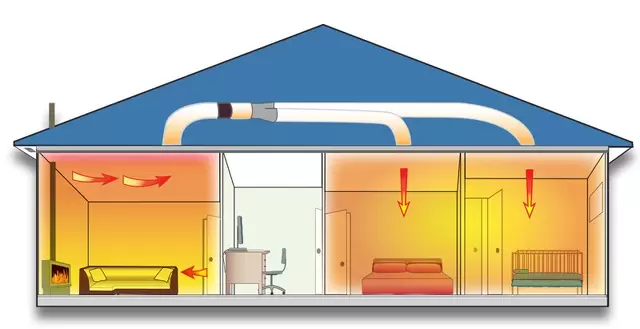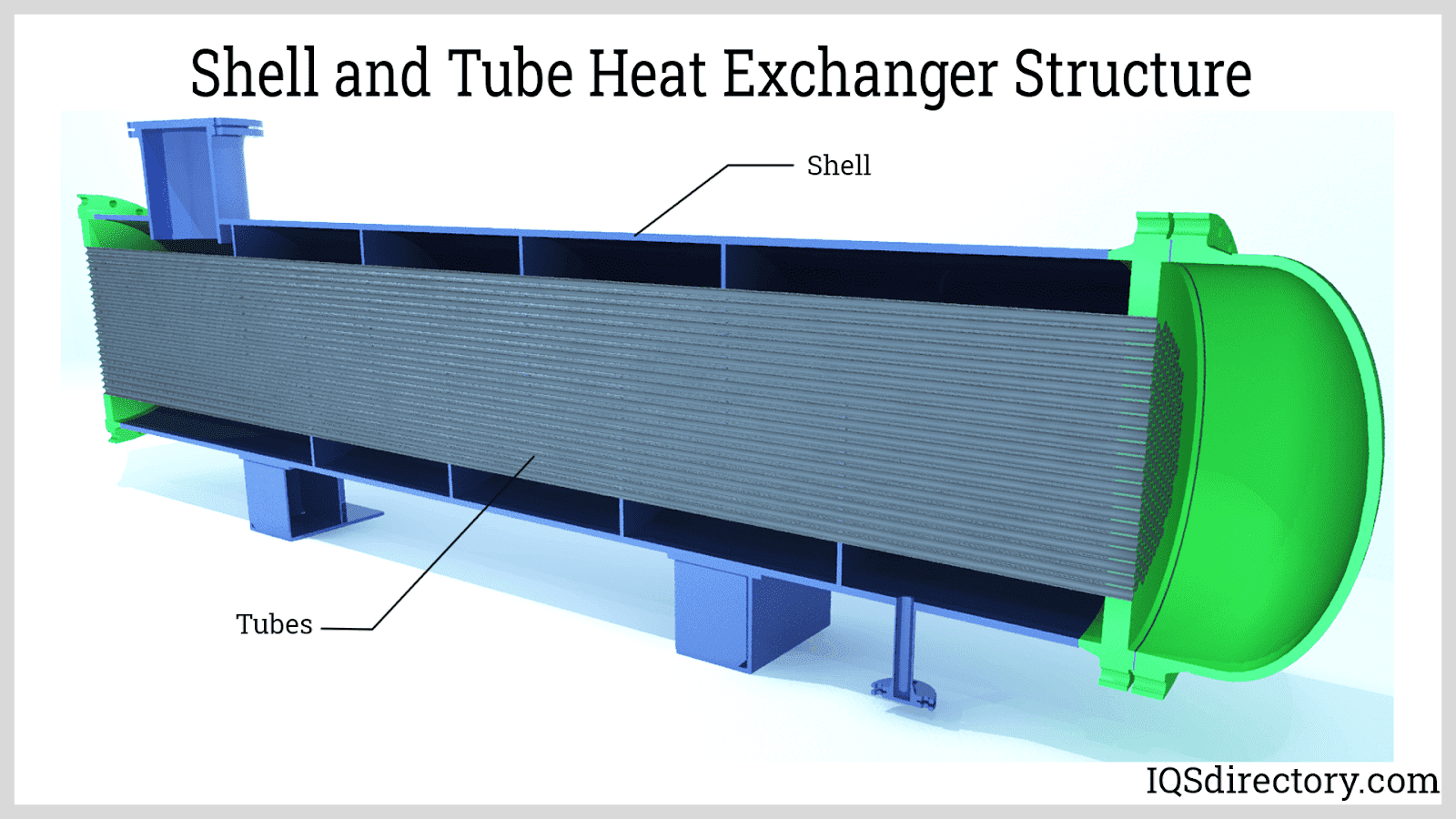Unlocking the Potential of DVS Heat Transfer Systems in Next-Gen Thermal Management
Wiki Article
Discovering the Advantages and Applications of Heat Transfer Equipments in Modern Market
Heat transfer systems play a crucial duty in contemporary industry. They incorporate various devices such as convection, radiation, and conduction, each contributing to reliable thermal management. Industries like production and aerospace benefit greatly from these systems. As innovations continue, the assimilation of innovative materials and modern technologies promises to enhance power effectiveness. This development raises crucial questions concerning the future implications for sustainability and functional expenses across numerous industries. What exists ahead in this continuous transformation?Recognizing Heat Transfer Principles
Heat transfer concepts are fundamental to the procedure of numerous industrial systems. These concepts incorporate the systems of convection, transmission, and radiation, each playing a vital duty in handling thermal power. Recognizing conduction involves examining how Heat relocates through solid materials, while convection relate to Heat transfer in liquids, driven by liquid motion. Radiation, distinctive from the other two, includes energy transfer with electromagnetic waves. The efficiency of Heat transfer influences system performance, power intake, and general performance. Efficient thermal administration is crucial in processes such as Heat, heating, and cooling recovery. By grasping these concepts, sectors can maximize their operations, minimize power costs, and improve devices longevity, thereby adding to an extra efficient and sustainable commercial landscape.Trick Kinds of Heat Transfer Solutions
While different markets use Heat transfer systems for varied applications, numerous crucial types stick out as a result of their certain functions and performances. One of the most typical kinds include conduction, convection, and radiation systems. Conduction systems transfer Heat through straight get in touch with between materials, making them efficient in solid-state applications. Convection systems, on the various other hand, utilize liquid activity to move Heat, appropriate for home heating or cooling down gases and fluids. Radiation systems run without a tool, relying on electromagnetic waves to transfer Heat, suitable for high-temperature settings. Each type offers distinct purposes, enabling sectors to tailor their Heat transfer remedies based on functional requirements, power performance, and cost-effectiveness. Comprehending these systems is necessary for optimizing efficiency in numerous commercial settings.Industrial Applications of Heat Transfer Technologies
The application of Heat transfer innovations in industry plays a vital function in enhancing power effectiveness and maximizing procedures. DVS Heat Transfer Systems. By applying innovative Heat exchange systems, firms can greatly lower their environmental impact while boosting overall performance. This integration not just promotes sustainability yet likewise lines up with modern regulatory and consumer demands for greener practicesPower Efficiency Improvements
As industries progressively focus on sustainability, power effectiveness improvements in Heat transfer modern technologies have actually come to be essential for reducing functional prices and ecological influence. Enhanced Heat exchangers, for instance, make use of advanced products and layouts to maximize thermal performance while reducing energy usage. Integrating variable speed drives in pumping systems permits for much better control of fluid circulation, leading to significant power financial savings. The implementation of clever sensing units and automation gives real-time tracking, allowing modifications that maximize power usage. Additionally, waste Heat healing systems catch excess thermal energy, transforming it right into useful power. These developments not only improve power efficiency but also contribute to a more lasting commercial landscape by decreasing greenhouse gas discharges and sustaining conformity with ecological regulations.Refine Optimization Techniques
Process optimization methods are critical in enhancing the efficiency and performance of Heat transfer technologies in industrial applications. These strategies involve refining processes to take full advantage of Heat transfer performance while reducing energy usage and functional costs. Approaches such as computational fluid dynamics (CFD) modeling allow engineers to simulate and evaluate Heat transfer situations, determining areas for renovation. In addition, real-time surveillance systems can supply beneficial information on temperature level slopes and flow rates, allowing adjustments that maximize performance. Applying innovative control approaches, such as predictive analytics, can improve system responsiveness to differing operational needs. By applying these optimization techniques, industries can attain greater thermal performance, minimized downtime, and boosted item top quality, eventually resulting in raised competitiveness in the market.
Environmental Effect Reduction
While industrial Heat transfer modern technologies are essential for operational efficiency, their application additionally offers chances for significant environmental effect reduction. By enhancing energy performance, these systems decrease fuel consumption, leading to lower greenhouse gas discharges. Progressed Heat exchangers can recoup waste Heat, redirecting it to preheat inbound liquids, therefore lowering power needs. On top of that, the assimilation of Heat transfer technologies in eco-friendly energy systems, such as solar thermal and geothermal applications, sustains the change to lasting practices. Industries that employ these innovations likewise gain from lowered operational DVS Heat Transfer Systems expenses and improved regulative compliance. On the whole, the calculated execution of Heat transfer systems not only bolsters efficiency however also fosters a much more sustainable commercial landscape, adding to global environmental objectives.Benefits of Reliable Heat Transfer Systems
Reliable Heat transfer systems supply substantial advantages in modern sector, mostly via enhanced energy effectiveness and price decrease. By enhancing thermal administration, these systems reduce energy waste, leading to lower functional prices (DVS Heat Transfer Systems). Companies can attain better sustainability and improved success.
Power Efficiency Improvements
As industries significantly prioritize sustainability and cost-effectiveness, power performance improvements in Heat transfer systems have actually arised as an essential emphasis. Enhanced effectiveness in these systems brings about reduced energy usage, enabling facilities to operate even more sustainably. By optimizing Heat transfer approaches, industries can lessen waste Heat and accomplish far better thermal monitoring, significantly decreasing their environmental impact. Advances in technologies such as Heat exchangers and insulation materials add to boosted efficiency and reliability. Furthermore, implementing energy-efficient Heat transfer solutions not only supports compliance with regulatory standards however also promotes a culture of advancement within organizations. Inevitably, these renovations are vital in lining up commercial procedures with global power preservation objectives, leading the means for a much more lasting future in manufacturing and processing markets.Cost Reduction Opportunities
By maximizing Heat transfer systems, industries can reveal considerable price reduction opportunities that enhance their profits. Efficient Heat transfer lowers power intake, bring about lower utility costs and decreasing operational costs. In addition, boosted system efficiency decreases the need for repair and maintenance, furthermore conserving costs in time. Boosted Heat transfer can additionally expand tools life-span, enabling firms to delay capital expenses on substitutes. Additionally, waste Heat recuperation systems can change excess Heat right into functional energy, better driving down costs. These systems not just improve processes but also contribute to sustainability campaigns, positioning business favorably in a progressively eco-conscious market. In general, the financial benefits of effective Heat transfer systems are substantial and necessary for competitive benefit.Innovations in Heat Transfer Solutions
Just how can modern industry enhance its procedures with cutting-edge Heat transfer services? By taking on sophisticated materials and modern technologies, industries can greatly boost thermal effectiveness and efficiency. Innovations such as nanofluids, which improve Heat transfer abilities past conventional fluids, and phase change products that save and launch thermal power, are getting traction. Furthermore, the integration of smart sensing units and IoT devices allows for real-time tracking and optimization of Heat transfer procedures, minimizing waste and enhancing system responsiveness. Furthermore, additive manufacturing techniques make it possible for the production of more complex Heat exchangers that make the most of area while minimizing product usage. Collectively, these innovations drive functional effectiveness and create affordable advantages in numerous markets, including power, aerospace, and production.The Role of Heat Transfer in Sustainability Initiatives
While the promote sustainability remains to reshape industries, the function of Heat transfer innovations becomes progressively important in attaining environmental objectives. Effective Heat transfer systems facilitate energy performance by enhancing thermal monitoring in various procedures, considerably lowering energy consumption and greenhouse gas exhausts. As an example, progressed Heat exchangers are made use of in industrial applications to recover waste Heat, therefore lessening power waste. In addition, developments such as stage change materials boost thermal storage, adding to renewable resource integration. In addition, the fostering of sustainable fluids in Heat transfer systems can minimize ecological influence. By focusing on reliable Heat transfer, markets not only boost operational performance however additionally straighten with global sustainability initiatives, fostering a cleaner, a lot more lasting future.Often Asked Concerns
Just How Do Heat Transfer Solutions Influence Energy Expenses in Production?
Heat transfer systems noticeably affect power expenses in production by improving performance, lowering waste, and enhancing thermal monitoring. These improvements cause decrease functional expenditures, eventually benefiting general productivity and profitability in commercial operations.What Upkeep Is Required for Heat Transfer Equipments?
Maintenance for Heat transfer systems includes regular examinations, cleansing of elements, inspecting fluid degrees and conditions, changing worn components, and making certain correct insulation. These actions enhance performance, prolong life expectancy, and avoid costly failures in procedure.Are There Safety Interest In Heat Transfer Systems?
Safety interest in Heat transfer systems consist of prospective leakages, pressure accumulation, and thermal threats. Proper design, regular upkeep, and adherence to safety procedures are vital to minimize these dangers and assure risk-free procedure in industrial atmospheres.
Just How Can I Pick the Right Heat Transfer System for My Business?
Selecting the right Heat transfer system includes evaluating elements such as performance, application requirements, budget plan restraints, and safety standards. An extensive evaluation of these aspects will certainly help assure perfect performance and integrity in business operations.What Are Typical Failings in Heat Transfer Systems and Their Causes?

Understanding transmission includes analyzing exactly how Heat moves through strong materials, while convection pertains to Heat transfer in liquids, driven by liquid movement. By optimizing Heat transfer methods, markets can minimize waste Heat and attain much better thermal monitoring, significantly decreasing their environmental effect. Waste Heat recuperation systems can transform excess Heat into functional power, even more driving down prices. Advanced Heat exchangers are made use of in industrial applications to recover waste Heat, therefore lessening energy waste. Common failings in Heat transfer systems include leakages, deterioration, and inefficient Heat exchange.
Report this wiki page